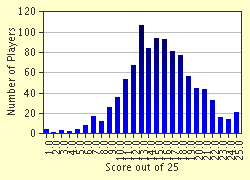Quiz Answer Key and Fun Facts
1. Name the large aquatic bird with a snake-like neck.
2. Which creature is the world's largest species of tarantula?
3. Name the large tree dwelling marsupial.
4. This marine flatfish, which is also a foodfish, has an upper sighted side which is brown in colour with darker spots but is almost white underneath.
5. Name the elongated fish which is found in South America.
6. This is Madagascar's largest carnivore.
7. Name the small, stout, burrowing rodent of North and Central America.
8. Name the aquatic salamander.
9. Which of the following is known as a Hawaiian honeycreeper?
10. Name the South American aggressive fish.
11. I am a banded, nocturnal, terrestrial snake.
12. This small African parrot is so named after its tendency to remain with a mate for life.
13. I have a black and white plumage with iridescent blue feathers on my wings. Living in Europe, I'm a member of the crow family.
14. Name the nightjar-like bird.
15. This long-winged bird from South America flies in caves using echolocation.
16. Name the slow moving African primate with large eyes.
17. Which of the following resembles a small kangaroo?
18. I get my name from raiding coconut trees to feed.
19. I am related to the gourami and I am a popular aquarium fish.
20. Name the heavy, goat-like mammal from central Asia.
21. My plumage is all black.
22. Name the deep sea fish.
23. I am named after the habit of twisting my head and neck into a contorted position.
24. Name the only marsupial that is adapted to live in water and has webbed hind feet.
25. Name the striped equine mammal.
Source: Author
Inquizition
This quiz was reviewed by FunTrivia editor
crisw before going online.
Any errors found in FunTrivia content are routinely corrected through our feedback system.


